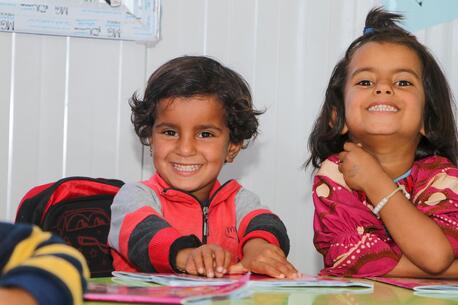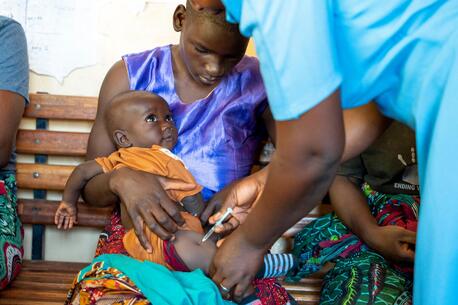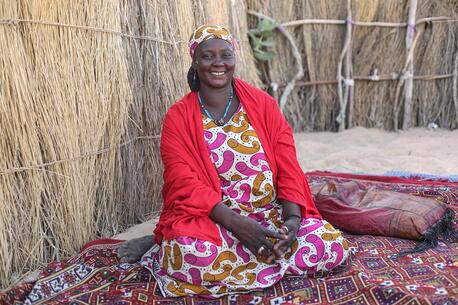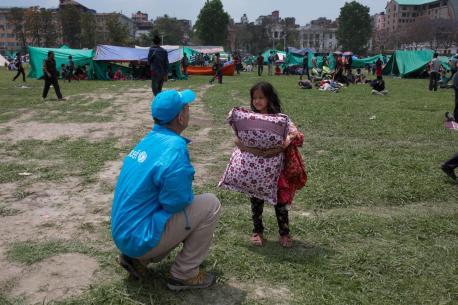
Nepal Earthquake Relief Underway
UNICEF is working to meet the immediate needs of children and families after the region's worst earthquake in 80 years.
Updated 11:00 a.m. EDT, April 29
The powerful earthquake that struck Nepal on Saturday has killed more than 5,000 people, and the death toll continues to increase. UNICEF is working to assist the 1.7 million children who urgently need help.
The Nepal earthquake has caused tremendous suffering; relief efforts intensify
- 1.7 million children need help in the worst-affected areas. The earthquake affected 35 out of 75 districts, including remote, rural areas and two densely populated cities—the capital Kathmandu and Pokhara. The earthquake also unleashed a huge avalanche that killed climbers in the Mount Everest region.
- More than 5,000 people have been killed and at least 10,000 are injured. The number of reported casualties continues to increase.
- The majority of the population is staying outside, despite the cold and rain, because of aftershocks and structural damage to buildings. Cell phone networks are down in many areas and power is out.
- More than 80 percent of health facilities have been seriously damaged in the five worst-affected districts. Hospitals are overcrowded and treatment is taking place in the streets. UNICEF is receiving requests for much-needed essential drugs, medical and surgical equipment and emergency tents.
- The risk of waterborne disease is increasing because of limited access to safe water and sanitation. As little as 1 in 5 people have access to safe water in some of the worst-affected areas.
- More than 274 schools in 16 districts are either partially or fully damaged. Temporary learning spaces are urgently needed to protect children and give them a sense of normalcy amid the crisis.
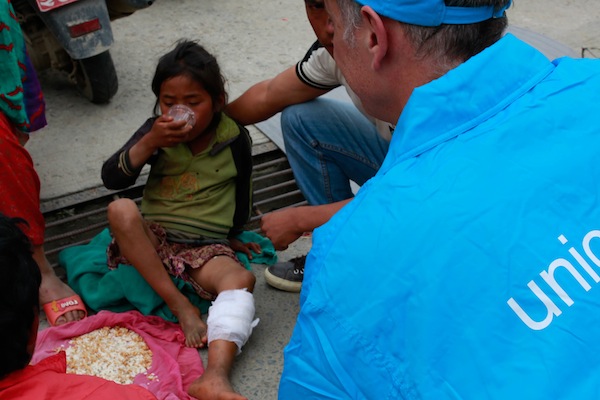
A UNICEF worker talks with the mother of a young girl, injured in Nepal's recent earthquake, at the Tribhuvan University Teaching Hospital in Kathmandu.
How UNICEF is responding
UNICEF and partners are working to reach 1.7 million children in 21 most severely affected districts, focusing on water and sanitation, protection, health and nutrition. Within hours of the earthquake, UNICEF delivered emergency supplies from its warehouses in Nepal, and has also airlifted supplies from its global warehouses.
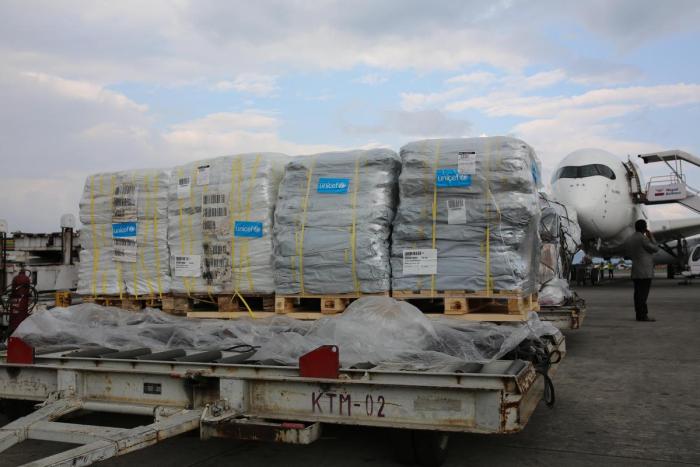
The response includes the following:
- UNICEF has delivered 29 metric tons of humanitarian supplies including tents and tarps, water purification tablets, and first aid and hygiene kits.
- UNICEF is delivering water and hygiene supplies in Bhaktapur where only 1 in 5 people are estimated to have access to clean water.
- UNICEF has provided tents to be used at hospitals to assist the large number of injured people.
- Water tankers are distributing clean water to 16 informal camps that have sprung up in the Kathmandu valley.
- UNICEF is working with partners to provide psychological support for children living in informal camps, and who have experienced extreme shock.
- ...Plus more to come in the hours and days ahead.
UNICEF has two offices in Kathmandu and has been working in Nepal since 1964 to save and improve the lives of the country’s most vulnerable children.
Firsthand reports from Kathmandu, Nepal
Rupa Joshi, UNICEF Communication Officer in Nepal, witnessed the earthquake:
"The shake was like nothing I have experienced ... it shook for a long time ... Many people fear Kathmandu will have a high death rate.
I saw many people preparing to camp out in the main open parade ground in the middle of the street. Relatives were crying in the main government hospital where the dead were being lined up in front of the hospital building. People fear that other buildings will collapse.
My family is traumatized. We are five generations living under one roof — from a 100-year-old grandmother to my 16-month-old granddaughter. Strong aftershocks are keeping most of us up."
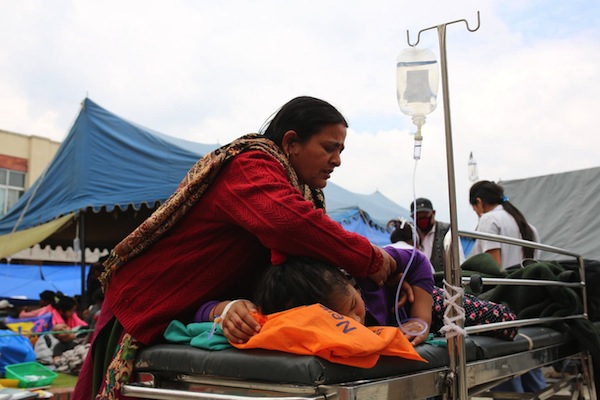
A mother tends to her injured daughter at Tribhuvan University Teaching Hospital in Kathmandu. Most patients have been moved to the courtyard as aftershocks continue. UNICEF is receiving requests for essential drugs, trauma kits and tents for Nepal's emergency hospitals. © UNICEF/NYHQ2015-1013/Nybo
"The hills felt like they were crying out in agony ... We crouched to the ground huddled tightly and my wife prayed fervently as my daughter cried. A house nearby swayed back and forth, and villagers ran for cover. After a few minutes the shaking stopped and we headed to the middle of a muddy field.
[The next morning] we decided to go to our apartment first and sadly the damage was very extensive – we’ll never live there again and it will likely be demolished in the coming weeks.
The challenges ahead for Nepal are enormous ... Millions of people are affected by the crisis and two out of five of them are children."
How to help
Children and families affected by the disaster need your help immediately:
Learn about five ways you can help.
